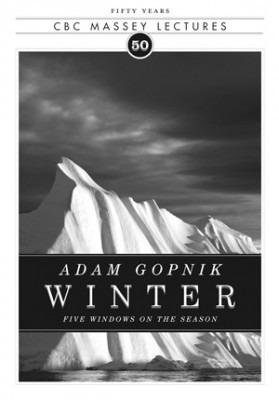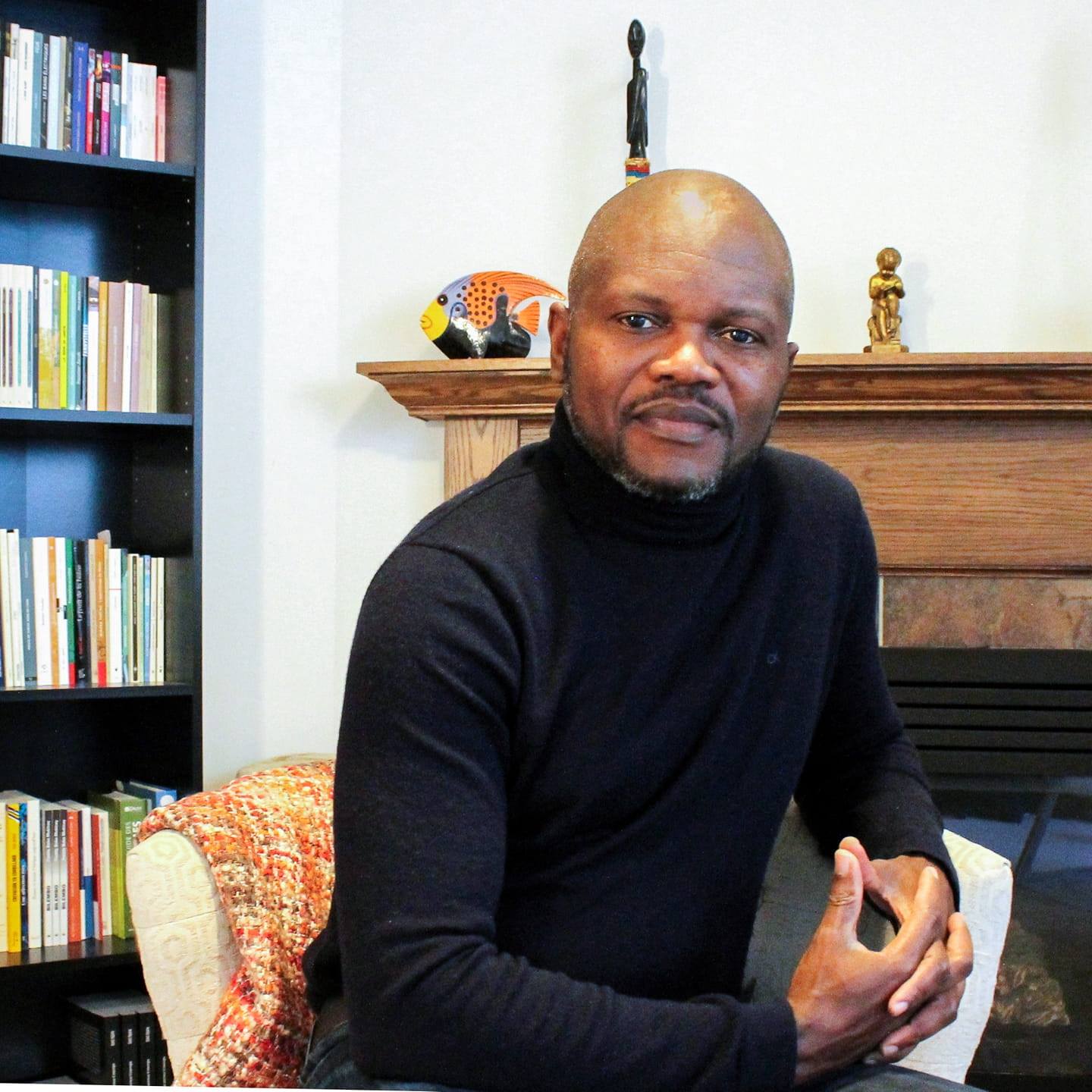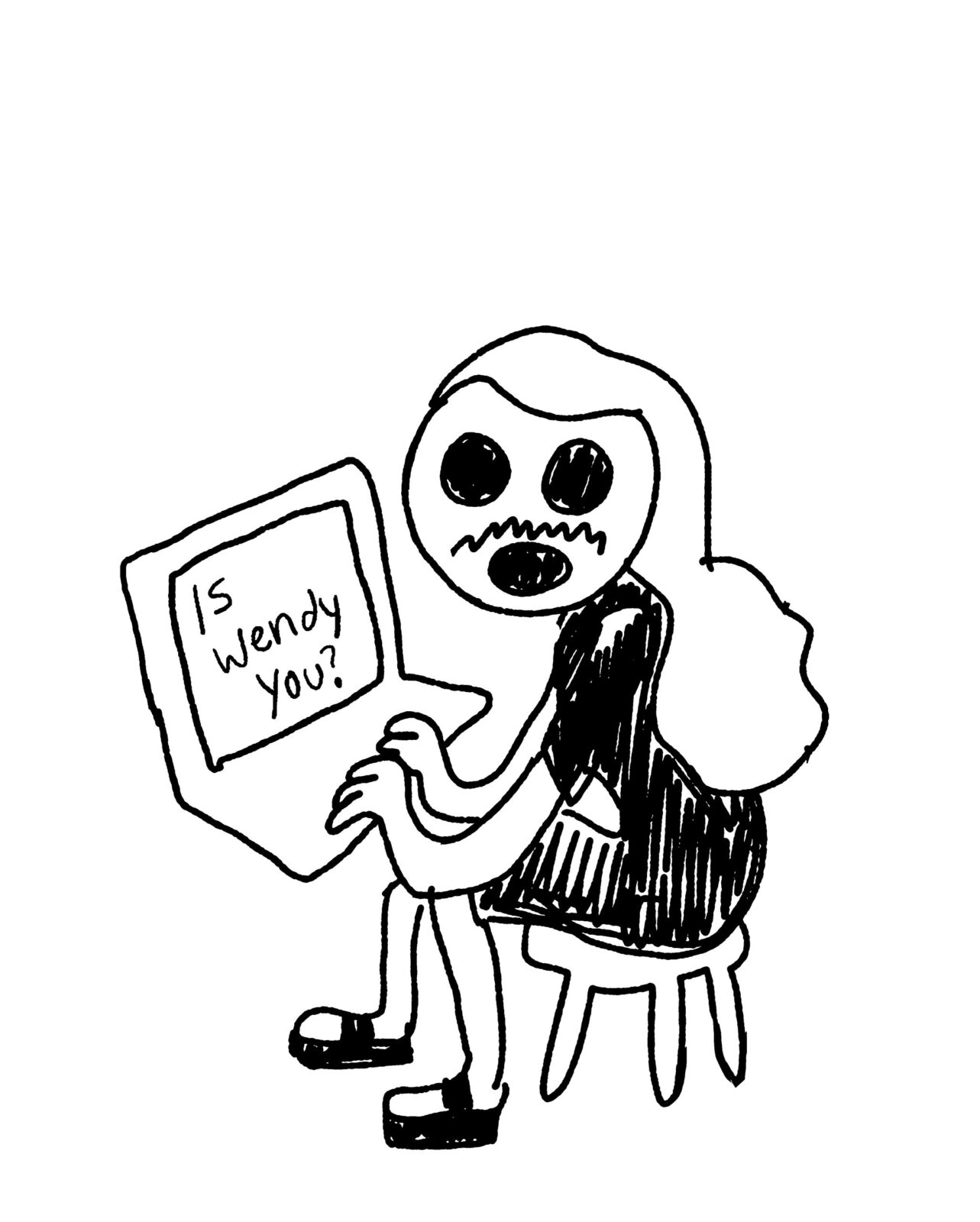Adam Gopnik has been reliably surprising us for so long now that there might be a danger of taking him for granted. Step back a bit from his work, though – whether it’s his expository essays in The New Yorker (dogs and the alleged decline of America post-9/11 being two recent subjects), the personal accounts of living in Paris and New York collected in Paris To the Moon and Through the Children’s Gate, or his groundbreaking cross-disciplinary art criticism – and it becomes clear just how unusual the fifty-five year-old’s approach is. In ways different from, yet kindred to, those of fellow Canadian Malcolm Gladwell, Gopnik takes an old form and makes it new, choosing counterintuitive routes into his subjects and proceeding, through the marshalling and interpretation of both high- and lowbrow sources, to make us wonder how we ever saw it any other way. Winter: Five Windows on the Season, the book version of Gopnik’s upcoming series of Massey Lectures (lectures he first practiced “mock-Massey”-style in front of select friends and family at home in New York) turns out to be an ideal venue for the display of his strengths. A potentially awkward hybrid form – in Gopnik’s words “amended transcripts of lectures I once gave, designed to be the vocal templates of lectures I have yet to deliver” – is made pleasurably readable through sheer enthusiasm and freshness of thought. Goethe, Dickens, Milton, Beethoven, and Napoleon are explored, but so are Joni Mitchell, the origins of central heating, the evolution of our perception of icebergs, the formation and popular mythology of snowflakes (turns out they’re not all different), and the birth of modern hockey – not on country ponds, Gopnik insists, but in Montreal neighborhood rinks, in a process leading directly to his beloved Montreal Canadiens. That last example illustrates something that’s been evident in Gopnik no matter how far afield he has ranged: that his perspective as a Canadian, and more specifically as a Montrealer, informs and underpins what he does. The Massey selectors made an inspired choice for 2011.

Winter
Five Windows on the Season
Adam Gopnik
Anansi Press
$22.95
Uncorrected proofs
256pp
978-0-88784-974-9
Ian McGillis: What was your initial reaction when asked to be a Massey lecturer? How familiar were you with the history and lineage of the series? Are there any of your predecessors’ lectures that stand out in your mind?
Adam Gopnik: Growing up in Montreal, I was a loyal – no that’s the wrong word, faithful, it has more religious overtones – a faithful listener of the CBC and of Ideas particularly, and of course the Masseys were part of that experience. I seem to recall Jane Jacobs on cities and Leslie Fielder on literature most vividly. Since being graced with the opportunity to speak myself, I’ve dutifully read up many I missed, and was particularly struck by Ignatieff on rights and John Ralston Saul. It’s an extraordinarily distinguished list, and I seem to be the ringer on it, a jester among giants. But perhaps – I certainly hope – everyone (who’s invited) feels this way.
When the invitation arrived – on my iPhone, standing in the snow on a February day at a bus stop on Madison Avenue and 58th Street – I felt, in an odd way, repatriated. I had a chance to articulate a piece of my own experience, the Canadian part, that had been denied to me before. I wanted a subject both Canadian and universal, and Winter as a subject came immediately to mind, and my very Canadian mother-in-law – Gudrun Bjerring, the first Canadian woman film director – as its dedicatee. By the time the bus got to 86th Street, I was ready to go… I won’t say home, for I’m all too well aware that there’s something infuriating, for those for whom home is not a site of sentimental pilgrimage, but simply the place they live, about those of us who live away and still blithely claim it, but back. Montreal made me, or a big part of me, and Montreal in winter particularly. All of the key experiences that happen to people between the ages of ten and thirty – rejection, infatuation, falling in love, making love, watching hockey, finding a vocation, discovering art, leaving home, rediscovering home as a refuge, reading Milton, for God’s sake, at the Mister Steer on St. Catherine Street – happened to me in Montreal.
IM: Are you comfortable with the idea of these five pieces being read as stand-alone essays? Would you, indeed, even categorize them as essays?
AG: I’d like them to be read as… lectures. I love the lecture as a literary form, something very different from the written essay or from the essay-read-out-loud. There are a few published lectures of that kind, where you feel the breathless pace of the speaker, even at the price of a slightly more awkward sentence-making. Isaiah Berlin’s lectures on romanticism come to mind, and so do Nabokov’s on literature. Though written, both have a spoken sound: terse and illustrative in Nabokov, avid and eager to please in Berlin. A lecturer has to exhort and to explain, where an essayist works by implication, irony, and indirection. There are transcriptions of Auden lecturing in the forties that sound like a poet speaking, without the elaborate numbered units. My own friend and teacher Kirk Varnedoe, tragically, left his last series of Mellon lectures unfinished – that is, he died before he could revise them. We had only the transcripts to publish. I liked the result. It sounded more like Kirk talking and thinking than any other text of his.
IM: Can you say any more about the “mock-Masseys” you mention in your Author’s Note? Were they interactive affairs incorporating feedback from the others in the room, or did you try for a simulation of the lecture hall experience?
AG: I wanted to be sure that the printed text had some of the sound, the rhythm, of the spoken word. And I suppose I wanted to simplify my life a little – I was at work on another book as I wrote this one – by seeing what I had to say before I tried to write down in sentences what I thought. More important, I wanted to simplify my sentences a little, or if not simplify them – they still look quite comma-bound on the page – put them back in touch with speech. So I assembled some patient friends and family – our upstairs neighbour, the wonderful writer Patty Marx, and her boyfriend, the polyglot Paul Roosin, were regulars, the writer Alec Wilkinson made a special visit for the hockey one, while the kids, to be honest, wandered in and out of the room as I spoke – and harangued them for an hour by can- dlelight from the top step of our living room. They listened patiently, made notes, and then shared them. Some went well, others badly. My assistant, Ariel Knutson, then transcribed them with fiendish concentration, and they became the basis for revision and re- revision. I’d love to do it again, though I don’t notice much clamour from the cheap seats for a repetition.
IM: To what degree, if any, was the “boning up” you did on these five themes an educational or revelatory experience for you?
AG: I would be lying if I said that the fundamental foundations of the series altered much from beginning to end: the two simple ideas that govern and unite the five lectures – that we have a richer idea of outside once we’re safe inside, and the inside is visible in the way we sing or paint or talk about the outside; and that winter is an eternal challenge to our habit of naming, organizing the world – remained constant. What I did learn, in spades, or snowflakes, is how. The wind blowing, if you like, was mine, the snowflakes being blown, all unexpected.
IM : I once attended a lecture by John Ralston Saul in which he chided his fellow Canadians for being the only winter country that complains about the cold and snow, saying that as a nation we are in a kind of collective denial. He cited a trip he had taken to Sweden, where he noticed that nearly all public buildings incorporate a large cloak room very near the entrance. In Canada, he said, we never know where to put our coats. Do you concur with any of this? Do you notice, on returning here after long periods abroad, that we are any more or less a “winter nation” than when you were growing up in Montreal?
AG: I’m not sure. That’s a nice observation of John’s about the Scandinavian coat closet – though as one married to a woman of Scandinavian descent, I wonder if it doesn’t reflect the Swedish gift for order as much as their comfort with winter: I expect that when Swedes strip for a summer skinny dip, there’s also a large locker room nearby where they put their clothes. Swedes are neat folks. It’s true that Canadians do whine about winter more than you might think, and only latterly, sort of secretly, admit to liking it.
IM: Was your choice of cultural references influenced at all by their greater or lesser degree of fame? In some of the more obscure cases – and I think it’s fair, without implying any judgment, to say that the diarist Anna Brownell Jameson and the composer Harry Somers are obscure – is there a sense in which you’re taking the opportunity to help make them better known?
AG: I never consciously chose to underline an obscure case in order to show off some obscure bit of learning. The trick, the big trick, with these lectures was to avoid at all costs the feeling of a seminar report. The subject is sufficiently large that you could simply cite stuff in place of thinking through stuff. So I made an informal rule that I wouldn’t obsess on anything that I wasn’t obsessed with, wouldn’t pretend to be excited by things that didn’t engage me entirely. There are some things that I talk of that I don’t exactly like – Caspar Friedrich strikes me as a chilly and a bit spooky proto-Nazi in his work – but can’t help being haunted by. So naturally when I found a new thing or author or composer that I did like, without reservations, it was thrilling. For the most part, the list of artists and writers analyzed – Dickens, Tchaikovsky, Monet, Trollope, Bishop, Jarrell, on and on – is a list of writers and artists I like and live with. But the new folks who came in – Jameson was one, Lawren Harris another – were especially welcome.
IM: Joni Mitchell’s “River” is a perfectly apposite choice to represent one type of Canadian response in song to winter. Was your choice of that song the result of a whittling-down process from among some other candidates?
AG: In taking specifically Canadian things, which I certainly did, I wanted the rule to be, or at least felt, that it wouldn’t be in because it was Canadian but because, being Canadian, it was as good as everything else I was talking about. Lawren Harris is not just good for a Canadian painter, but a remarkable painter; Joni Mitchell is a poet and artist of a rare quality – better than Dylan, with Lennon-McCartney and James Taylor the best songwriters of her generation – and rather than crowd in six Canadian songwriters to show I could, I cited one who was incised on all our souls. I wanted to bore down, if I could, on why certain pictures or songs move me as much as they do. I listen to “River” and though I’m neither a Saskatchewan girl on skates nor live in L.A., it always moves me to tears, makes me feel that something felt has become something known, registered, permanent. That interests me; how many different attitudes to winter you might compile in a Canadian record collection doesn’t. I recall trying to say this to one of my art history professors at McGill years ago, that what I really wanted to understand was why certain pictures – I think Renoir’s “Loge” was, weirdly, the one I chose to cite – seem to resonate beyond their simple subjects and treatment with all the perfume of a period and resonate in the mind as broadly as any novel. He looked at me as if I were crazy, and said what I was really interested in might not be art history but art appreciation. He said it as damningly as he could, but he wasn’t wrong.
IM: Although a huge hockey fan, you say that “at moments (you) have been inclined to abandon” the game. How close are you, at this time of headshots and concussions and a general rising tide of violence, to acting on that inclination? Is there any convincing response that fans like you and I can give when non-believers say that the game has become irredeemable? I have felt, when faced with such views, that my very Canadian-ness is in crisis.
AG: I get furious about, and depressed by, the degradation of hockey, and like you I swear the game off only to come back again. The Chara-Pacioretty incident sickened me, even granting Chara every benefit of the doubt. Not least was the attitude – the chortling, he-got-him attitude – of the morally deranged Boston broadcasters and fans, and the more general attitude of the league under the morally deranged Bettman, too. In no other sport in the world – no other sport in the world – would that kind of thing be greeted with anything except an ejection and a long-term suspension. Zidane merely head-butted an Italian once, and he was in permanent disgrace, and rightly so. Sports are mock-combat, pretend-war. When we let them cross the line beyond, they become ugly rather than beautiful. What can you do? Hockey remains not only my favourite game but, as you say, a part of who we are, essential to who we are. To surrender the game to the fools is just too painful. We should form – under Ken Dryden’s leadership? – a committee to Save Canadian Hockey For The World. I’d join in a Montreal minute.mRb







0 Comments